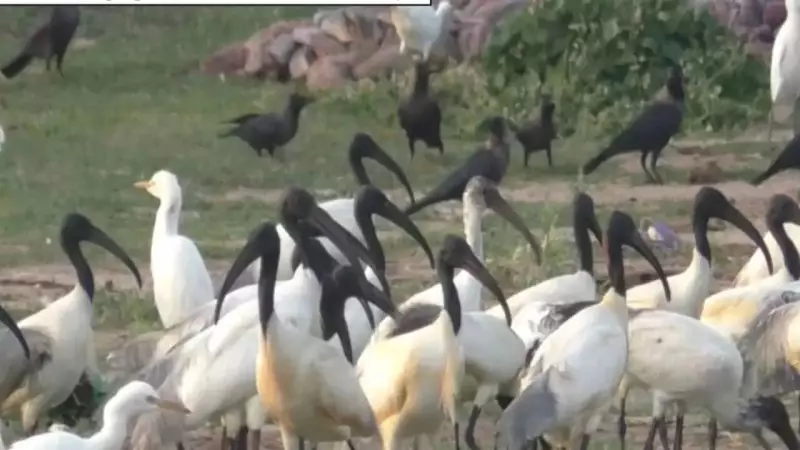
In an exciting development for wildlife enthusiasts and conservationists, the rare and majestic Black-Headed Ibis has been spotted thriving in the salt pans of Thoothukudi, Tamil Nadu. This remarkable sighting isn't just a treat for birdwatchers—it's a powerful indicator that local wetland ecosystems are on the path to recovery.
A Rare Visitor Signals Environmental Health
The Black-Headed Ibis (Threskiornis melanocephalus), classified as 'Near Threatened' on the IUCN Red List, has made a surprising appearance in the industrial landscape of Thoothukudi's salt production areas. These elegant birds, distinguished by their striking black heads and necks contrasting with white plumage, typically prefer freshwater wetlands but have adapted to the unique conditions of the salt pans.
Why This Sighting Matters for Conservation
Environmental experts are celebrating this development as evidence that conservation efforts are bearing fruit. The presence of these sensitive birds suggests that:
- The wetland habitats in and around Thoothukudi are regenerating successfully
- Food sources and environmental conditions can support vulnerable species
- Industrial areas and wildlife can coexist when managed responsibly
- Migratory bird patterns may be shifting to include newly restored habitats
A Promising Future for Migratory Birds
This sighting opens up new possibilities for bird conservation in southern India. The salt pans of Thoothukudi could potentially become an important stopover point for various migratory species, creating new corridors for bird migration along the Indian coastline.
Local conservation groups are now working to document these sightings more systematically and are advocating for greater protection of these unexpectedly valuable habitats. The Black-Headed Ibis has unwittingly become an ambassador for wetland conservation, demonstrating that even human-altered landscapes can serve as crucial sanctuaries for threatened wildlife.
For residents of Thoothukudi and bird lovers across India, this development represents a heartening success story in environmental conservation—one that promises a brighter future for both local ecosystems and the magnificent migratory birds that depend on them.





